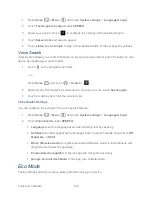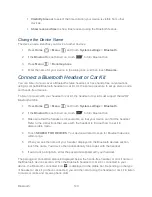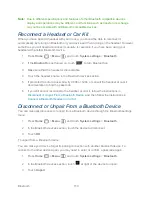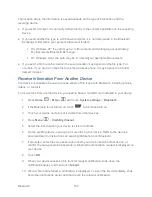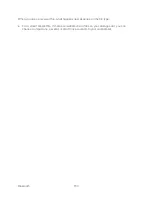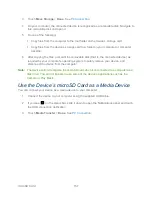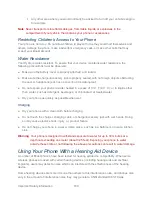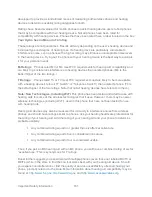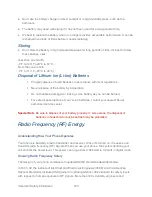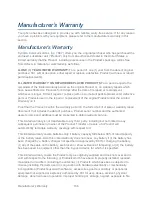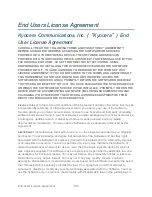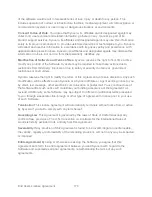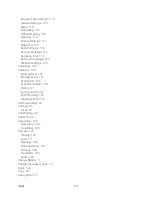
Important Safety Information
159
Following Safety Guidelines
To operate your phone safely and efficiently, always follow any special regulations in a given
area. Turn your phone off in areas where use is forbidden or when it may cause interference or
danger.
Using Your Phone Near Other Electronic Devices
Most modern electronic equipment is shielded from radio frequency (RF) signals. However, RF
signals from wireless phones may affect inadequately shielded electronic equipment.
RF signals may affect improperly installed or inadequately shielded electronic operating
systems or entertainment systems in motor vehicles. Check with the manufacturer or their
representative to determine if these systems are adequately shielded from external RF signals.
Also check with the manufacturer regarding any equipment that has been added to your vehicle.
Personal Implantable Medical Devices
Consult the manufacturer of any personal medical devices, such as pacemakers and hearing
aids, to determine if they are adequately shielded from external RF signals.
Note
: Always request permission before using the phone in healthcare facilities or near medical
equipment.
Turning Off Your Phone Before Flying
To prevent possible interference with aircraft systems, the U.S. Federal Aviation Administration
(FAA) regulations require you to have permission from a crew member to use your phone while
the plane is on the ground. To help prevent the risk of interference, regulations prohibit using
your phone while the plane is in the air.
Turning Off Your Phone in Dangerous Areas
To avoid interfering with blasting operations, turn your phone off when in a blasting area or in
other areas with signs indicating two-way radios should be turned off. Construction crews often
use remote-control RF devices to set off explosives.
Turn your phone off when you‟re in any area that has a potentially explosive atmosphere.
Although it‟s rare, your phone and accessories could generate sparks. Sparks can cause an
explosion or fire, resulting in bodily injury or even death. These areas are often, but not always,
clearly marked. They may include:
Fueling areas, such as gas stations.
Below deck on ships and boats.
Fuel or chemical transfer or storage facilities.
Areas where the air contains chemicals or particles such as grain, dust, or metal
powders.


